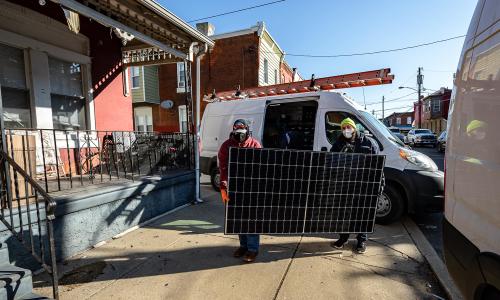We live in an energy-hungry world. But what if our devices and homes and businesses could operate exactly as they do today, while using less electricity? That's the promise of energy efficiency, a major clean energy solution.
In fact, our homes, businesses, and industries account for three-quarters of US energy consumption and two-thirds of US carbon emissions. They're also where some of the most significant and readily available energy and economic savings can be found.
Time and again, energy efficiency policies have proven to be smart investments that create significant financial returns. What’s more, these energy savings can allow us to shut down the oldest, dirtiest power plants—and not build new ones to replace them.
We already have the technology to reduce our natural gas and electricity consumption by more than 25 percent. In order to get these efficient technologies and measures deployed, we need policies and programs that help overcome entrenched, inefficient practices and empower businesses and consumers to make wise decisions and eliminate wasteful uses of energy.
Increase the efficiency of our homes
Our homes and residential buildings account for 21 percent of total US energy use. The electricity used to power our air conditioners, lighting, refrigerators, and other appliances accounts for roughly half of that; water and space heating consume the rest.
Programs like the Energy Star Label help consumers make better, more efficient choices when they replace or install new appliances. Building new homes with efficiency in mind can add even more savings.
Improve industrial and commercial efficiency
The industrial sector produces millions of different products for consumers each year, but is also responsible for about one-third of all US energy use. The buildings where we work, shop, meet, and play account for another 18 percent of energy consumption.
Energy-efficient building designs can significantly reduce the energy demands of both sectors. Investing in high-efficiency combined heat and power systems has the potential to save even more.







